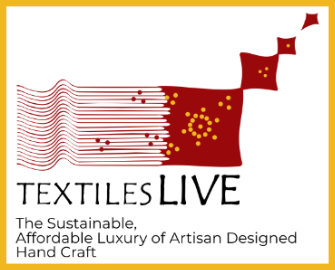Weavers in Morocco
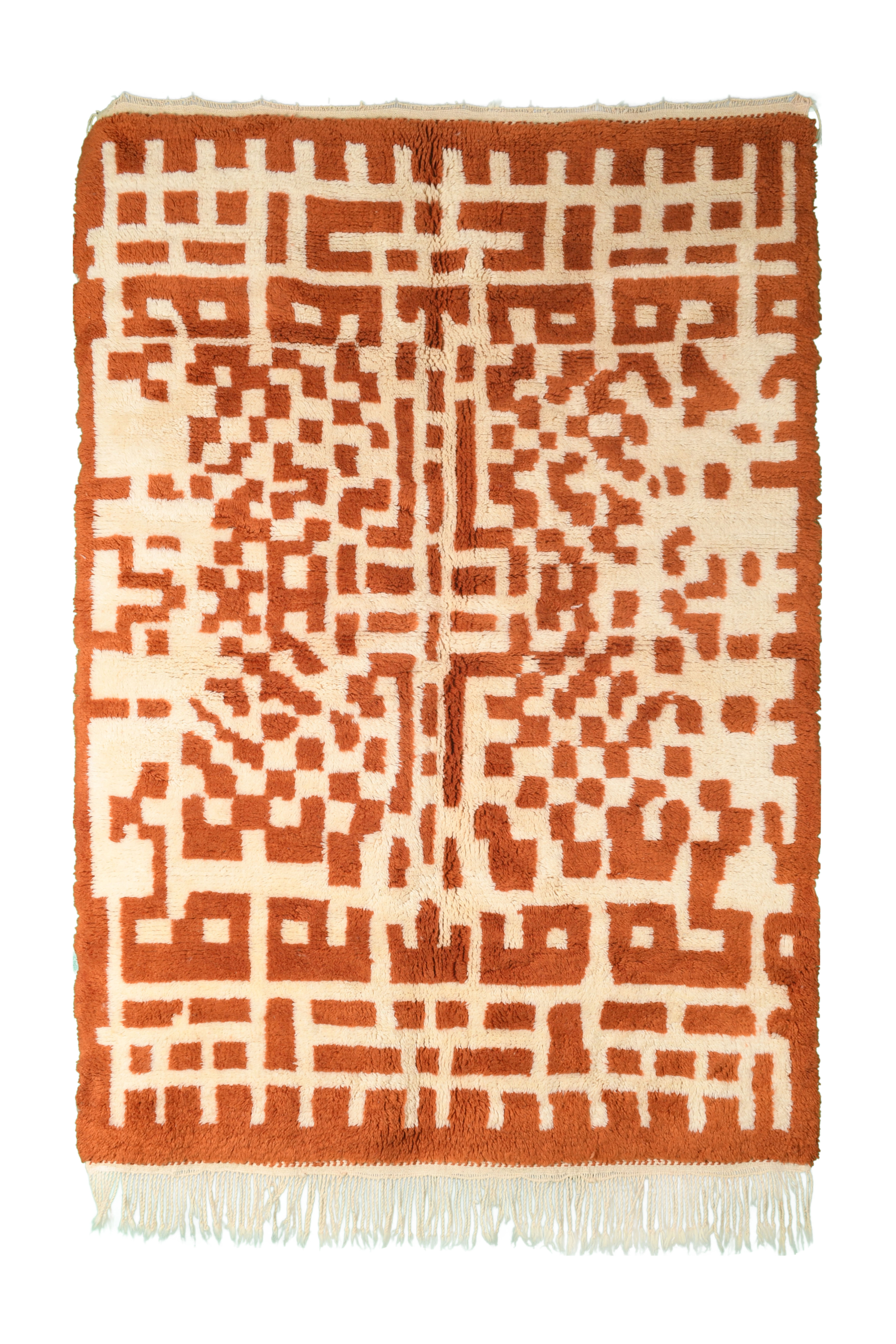
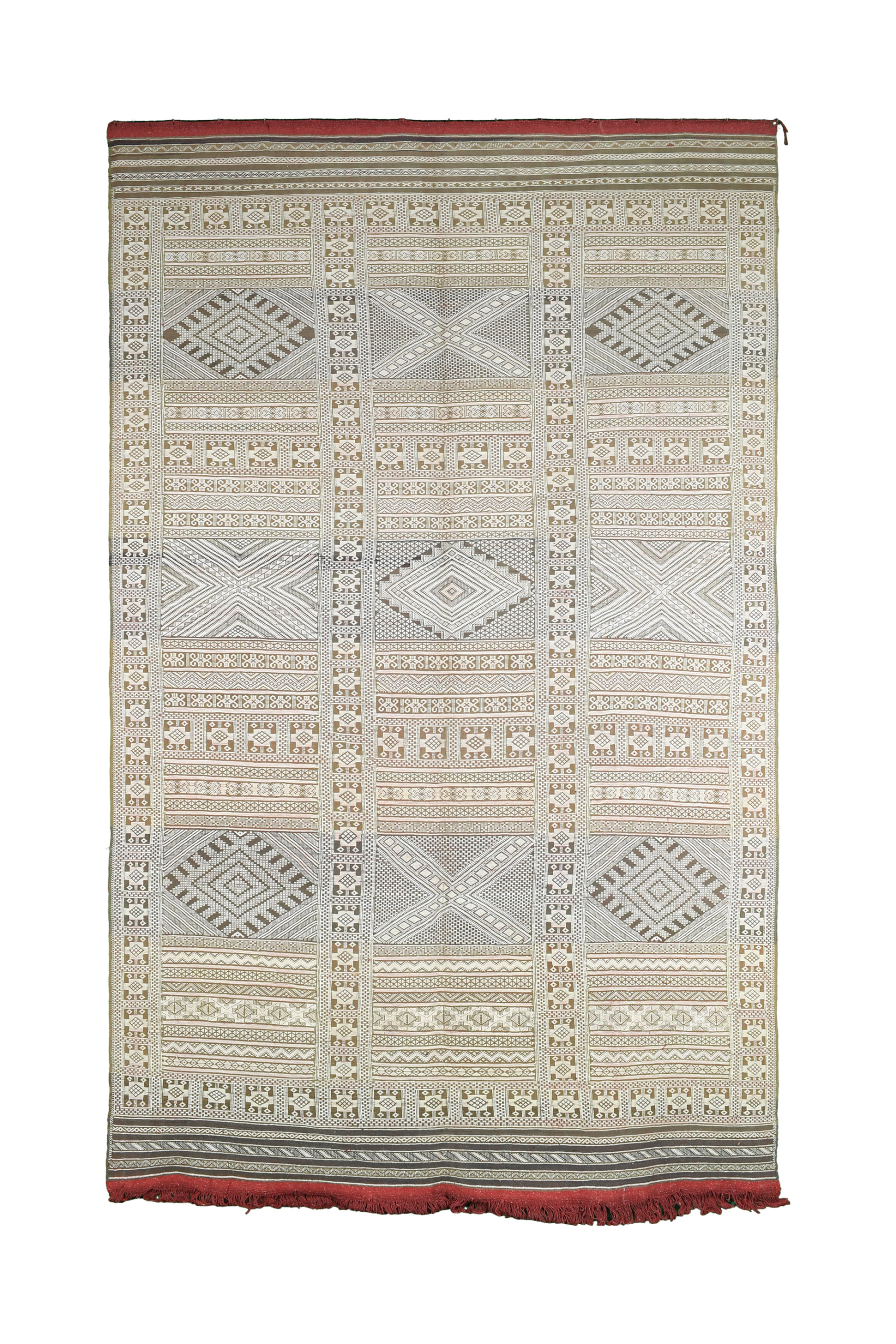 In March 2024, I visited Morocco just for fun, but of course I gravitated to hand craft. In Casablanca, I was delighted to serendipitously bump into an exhibition celebrating National Handicrafts Week, sponsored by His Majesty King Mohammed VI. Booths of superb carpets were beautifully displayed. WeBerber was the one that particularly caught my eye. The two Amazigh (Berber) entrepreneurs welcomed my friend and me, and enthusiastically showed us weavings by at least three different communities. Most amazing were beautiful silk tassels that they explained serve as Amazigh women’s traditional underwear. Today the tassel yarns are recycled into new carpets.
In March 2024, I visited Morocco just for fun, but of course I gravitated to hand craft. In Casablanca, I was delighted to serendipitously bump into an exhibition celebrating National Handicrafts Week, sponsored by His Majesty King Mohammed VI. Booths of superb carpets were beautifully displayed. WeBerber was the one that particularly caught my eye. The two Amazigh (Berber) entrepreneurs welcomed my friend and me, and enthusiastically showed us weavings by at least three different communities. Most amazing were beautiful silk tassels that they explained serve as Amazigh women’s traditional underwear. Today the tassel yarns are recycled into new carpets.
I began to follow this enterprise on Instagram. WeBerber https://moroccan-carpet.com @the_moroccan_carpet is a leading provider of traditional Moroccan rugs that was founded in 2017 by Abdelghani Hammoud, of the third generation of a Moroccan Berber artisan family. Situated in Khemisset, near Rabat in the Middle Atlas mountains, the enterprise embodies a rich heritage in crafting exquisite handmade wool rugs and is committed to quality and authenticity.
I was happy to learn that on 14 May 2024, WeBerber launched their latest collection of traditional and contemporary natural dyed and hand knotted and woven Moroccan rungs. The carpets are crafted with wonderful geometric patterns that narrate Amazigh (Berber) terrain, lifestyle, and cultural heritage. The collection debuted at the opening of the Morettina showroom in Dar Bouazza.
Not only are WeBerber carpets visually delicious; they also preserve and celebrate traditional knowledge, craftsmanship, and creative innovation –and they provide sustainable income opportunities for Amazigh artisans, a winning recipe close to my heart.

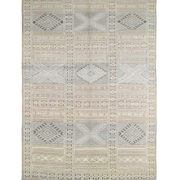
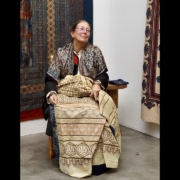
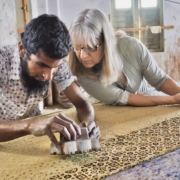
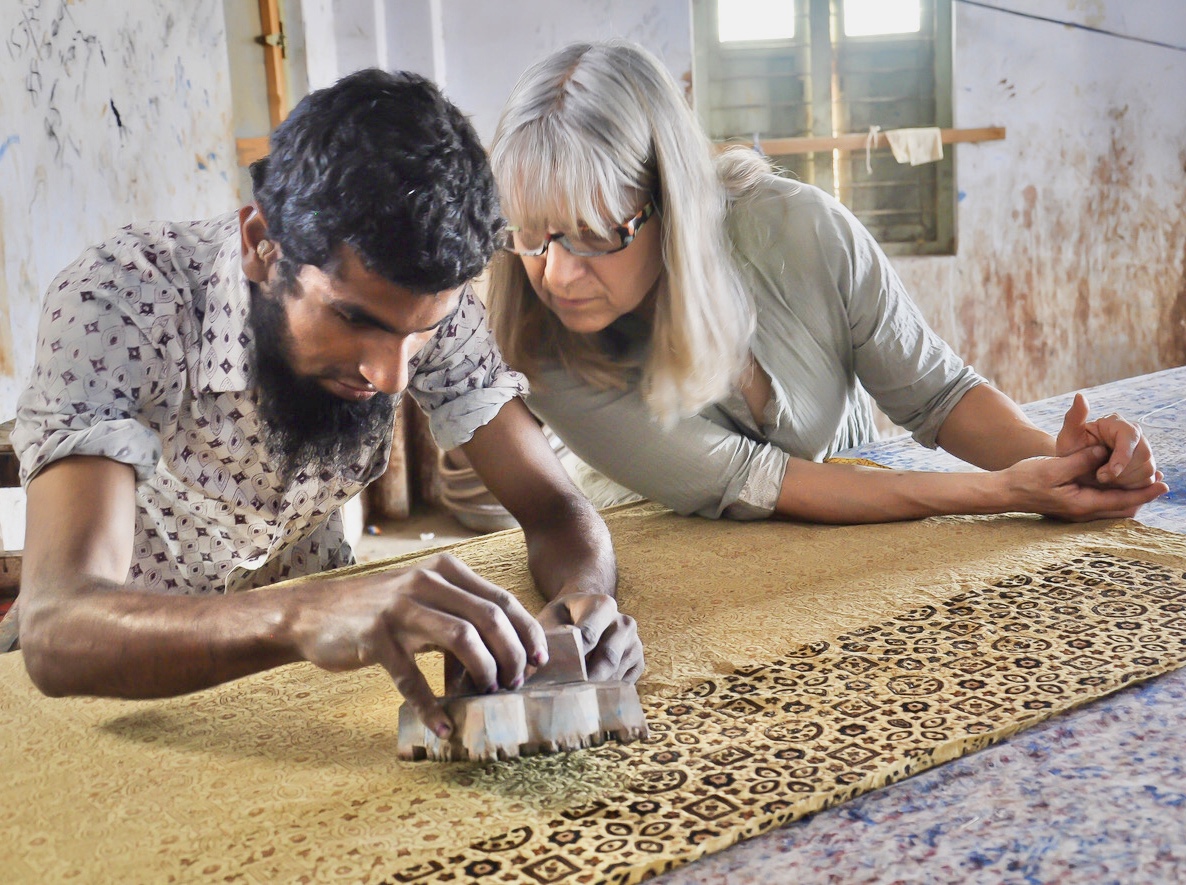 Akib Ibrahim Khatri teaches Ajrakh hand print and natural dye in a Craft Traditions course, Ajrakhpur 2015.
Akib Ibrahim Khatri teaches Ajrakh hand print and natural dye in a Craft Traditions course, Ajrakhpur 2015. 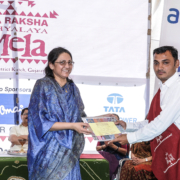
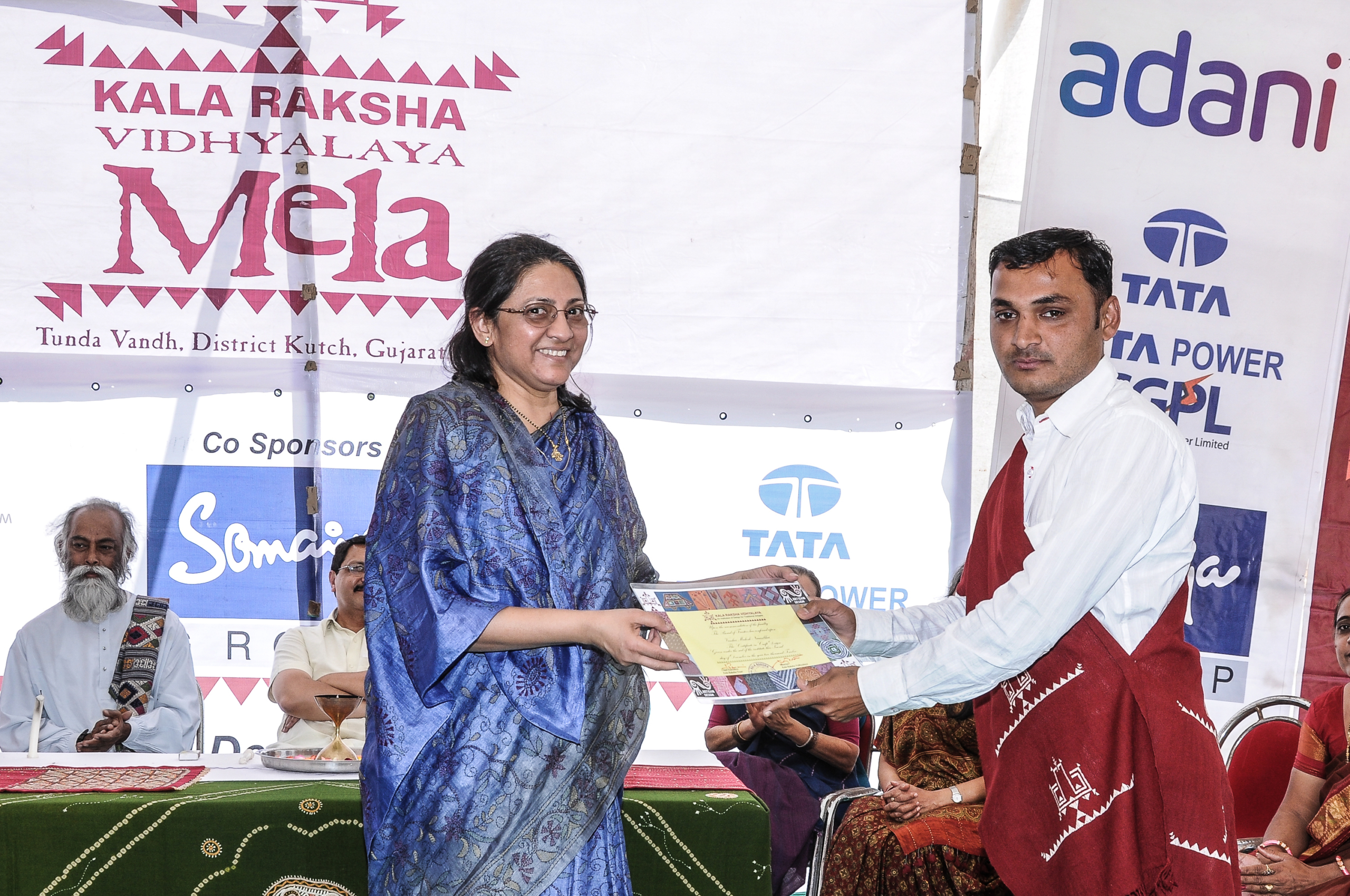 In 2012, the Kala Raksha Vidhyalaya Convocation was sponsored by Tata Power, Adani group and the K.J.Somaiya Trust. Today, Tata and Adani have their own craft CSR projects. The K.J. Somaiya Gujarat Trust now operates the design education program as Somaiya Kala Vidya. What happened between 2012 and now?
In 2012, the Kala Raksha Vidhyalaya Convocation was sponsored by Tata Power, Adani group and the K.J.Somaiya Trust. Today, Tata and Adani have their own craft CSR projects. The K.J. Somaiya Gujarat Trust now operates the design education program as Somaiya Kala Vidya. What happened between 2012 and now?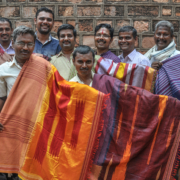
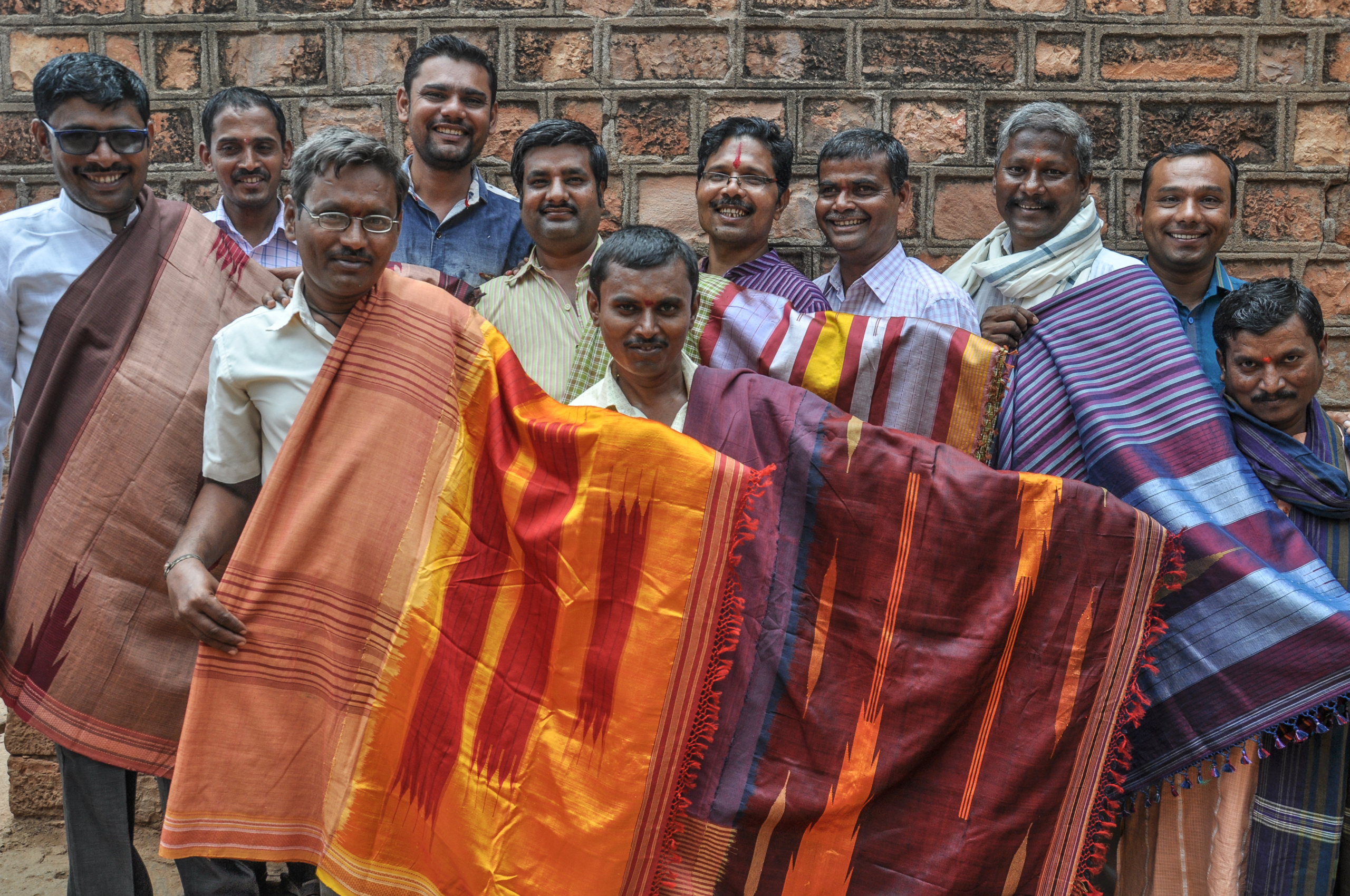 In the time of the plague in India, 1994, Kala Raksha exhibited a small collection in the National Gallery of Modern Art, Mumbai, and also held a pop-up a few blocks away. A customer contacted me, angry. ‘You are cheating,’ she said. ‘The shawl in the Museum is triple the cost of the one in the pop-up.’ I explained to her that the Museum shawl was yarn dyed in natural dyes and had a lot of fine embroidery, while the pop-up shawl was piece dyed in synthetic dye and had less embroidery of lower quality. Then I added, “If you don’t know the difference, you should buy the cheaper one.”
In the time of the plague in India, 1994, Kala Raksha exhibited a small collection in the National Gallery of Modern Art, Mumbai, and also held a pop-up a few blocks away. A customer contacted me, angry. ‘You are cheating,’ she said. ‘The shawl in the Museum is triple the cost of the one in the pop-up.’ I explained to her that the Museum shawl was yarn dyed in natural dyes and had a lot of fine embroidery, while the pop-up shawl was piece dyed in synthetic dye and had less embroidery of lower quality. Then I added, “If you don’t know the difference, you should buy the cheaper one.”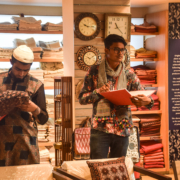
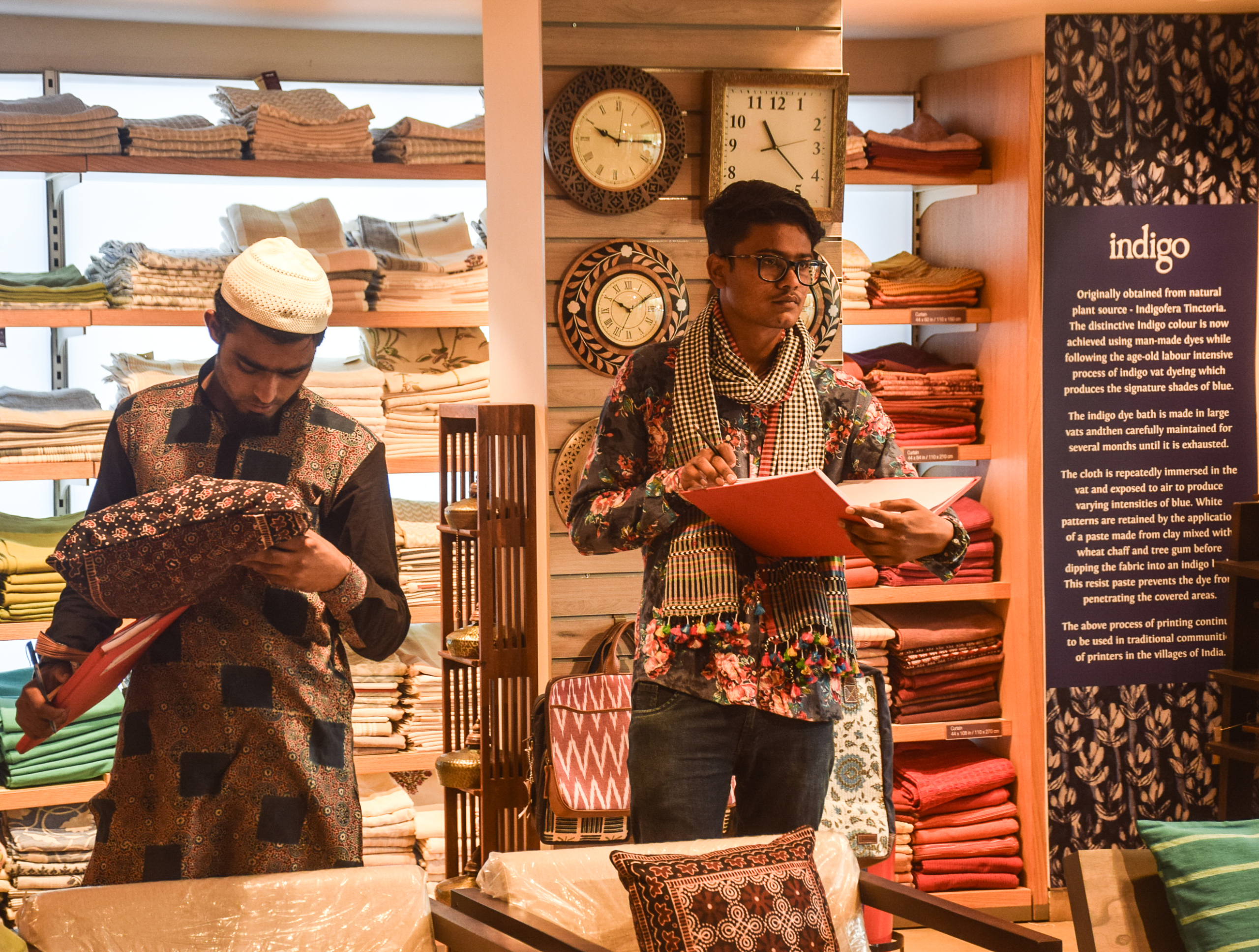
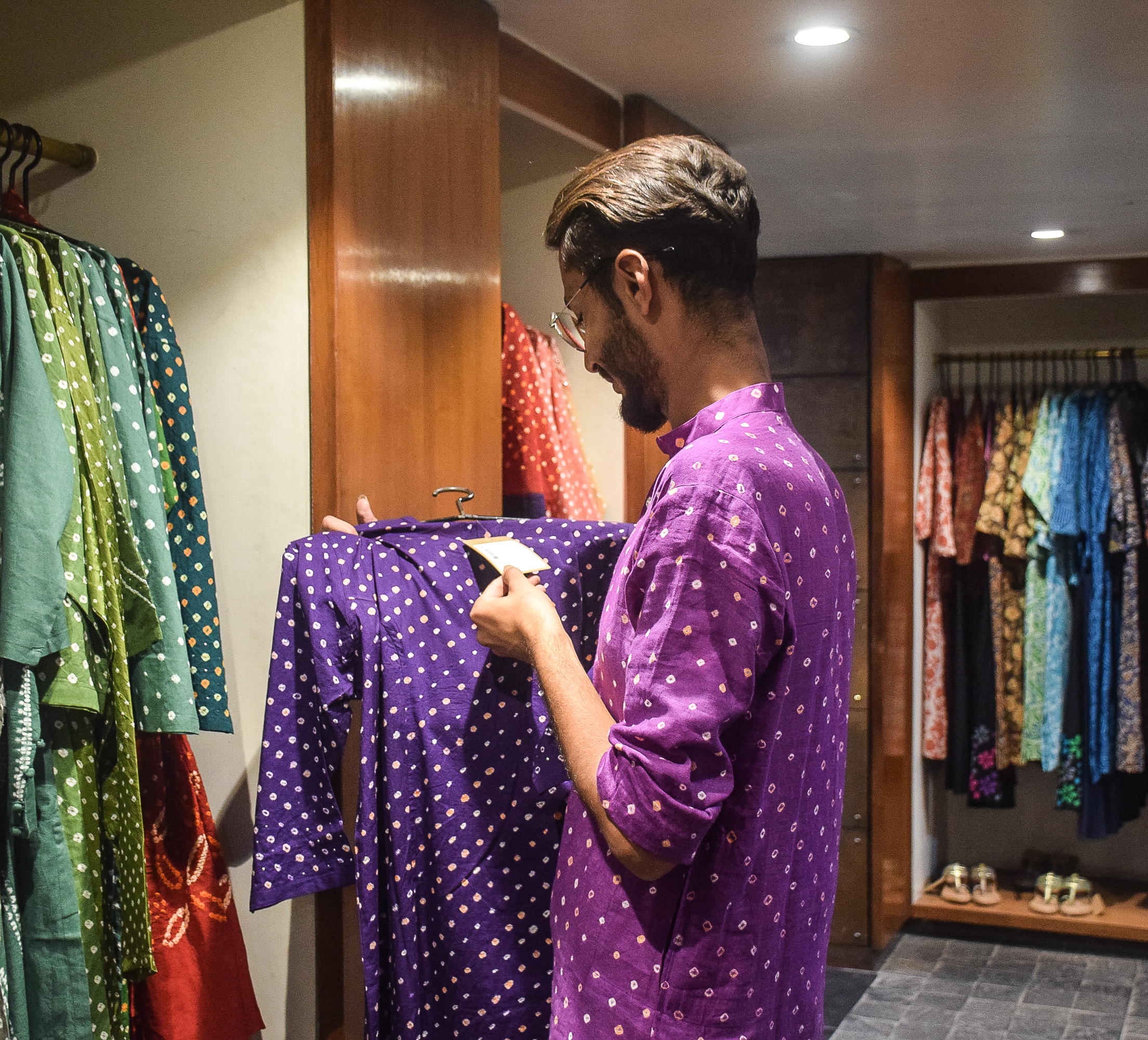 Today’s craft is created for urban markets. In many regions of India, artisans don’t have direct access to those markets. They are beholden to “Master Artisans” for whom they do job work and who lend them money they won’t repay in their lifetimes, preventing them from leaving their workshops.
Today’s craft is created for urban markets. In many regions of India, artisans don’t have direct access to those markets. They are beholden to “Master Artisans” for whom they do job work and who lend them money they won’t repay in their lifetimes, preventing them from leaving their workshops. 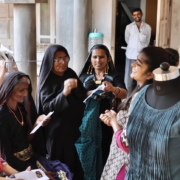
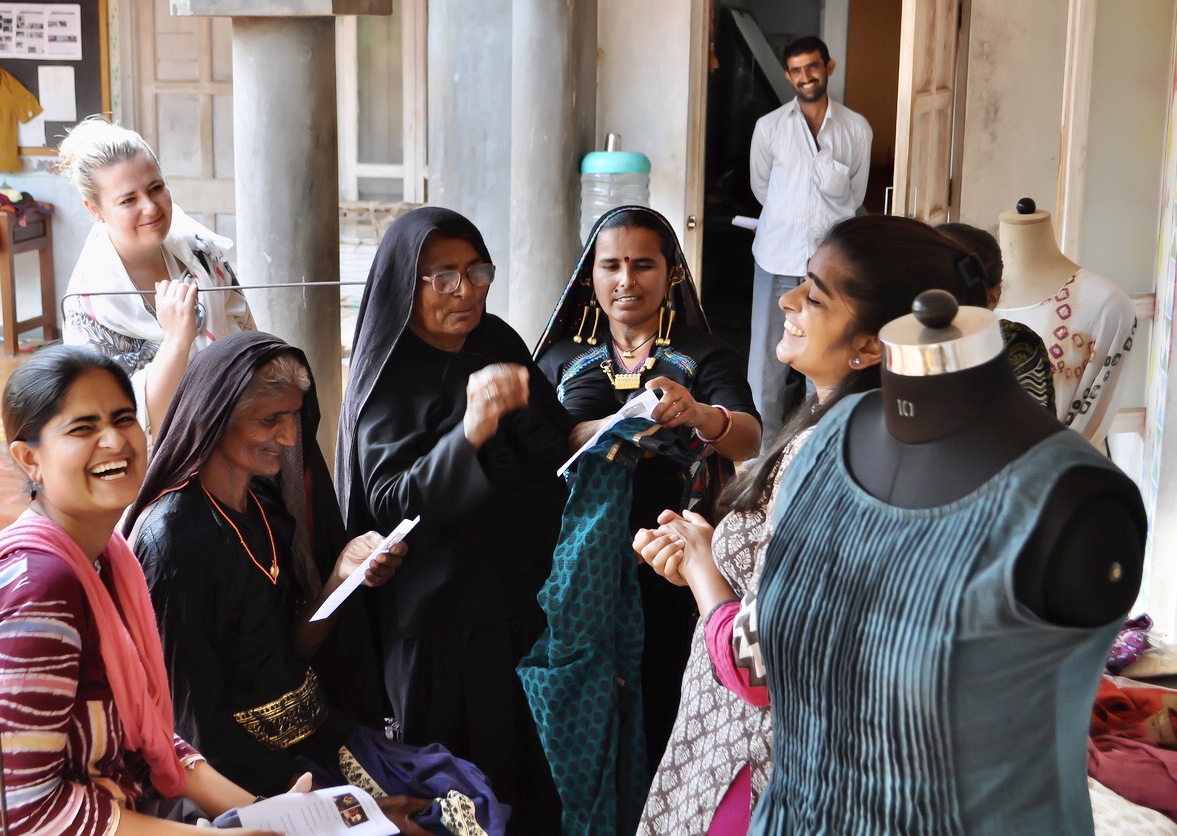 Kala Raksha Vidhyalaya women’s class, 2013.
Kala Raksha Vidhyalaya women’s class, 2013. 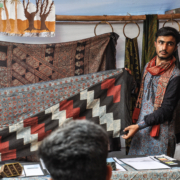
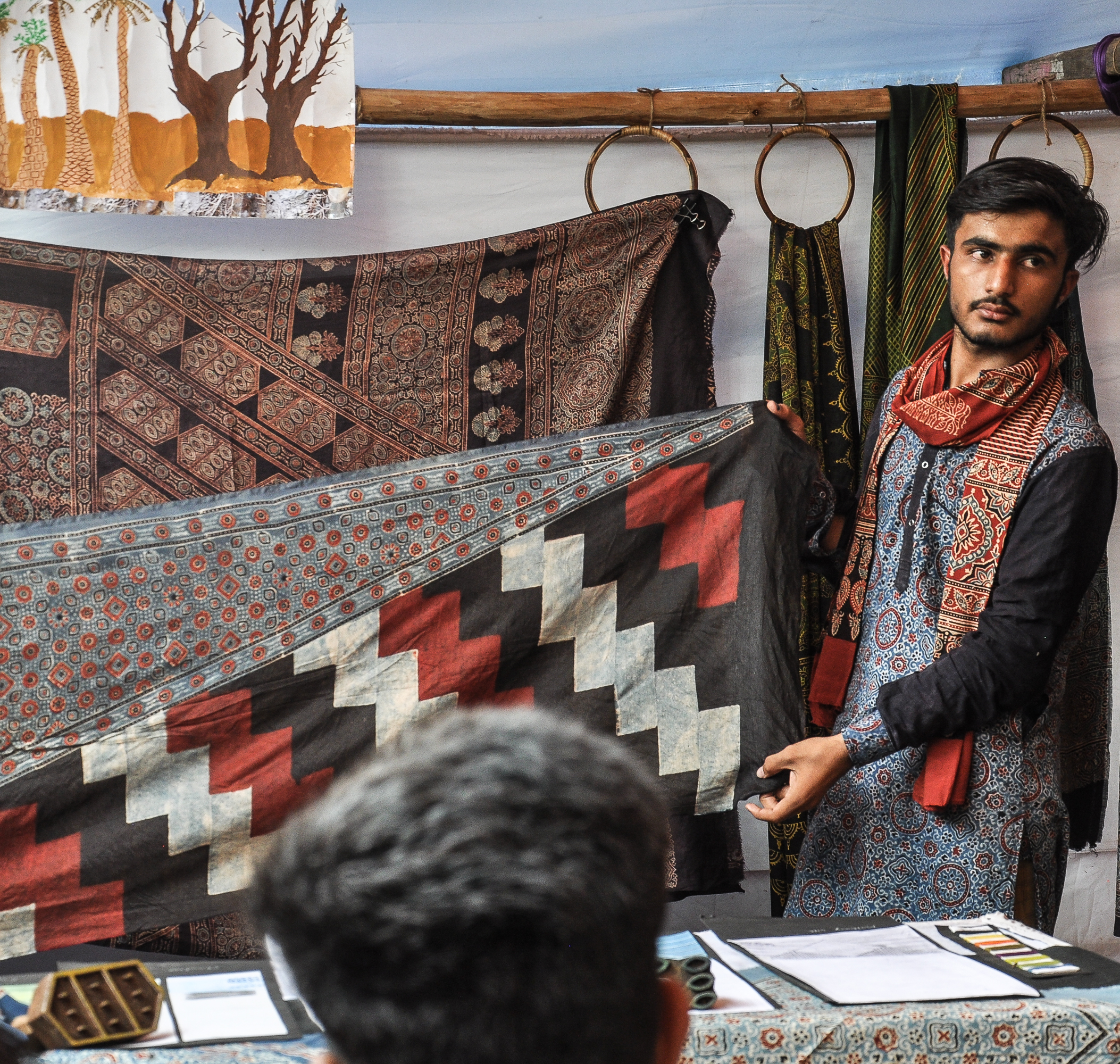
 Tausifbhai presents his work to family and professional juries during the “Merchandising, Presentation” module of the Somaiya Kala Vidya design course, 2019. Presentation includes an explanation of the collection theme, concept development, and specific innovations the student did, in order to illuminate the thought embedded in the work as well as technical innovations- and create value for the whole of the work: concept and creation.
Tausifbhai presents his work to family and professional juries during the “Merchandising, Presentation” module of the Somaiya Kala Vidya design course, 2019. Presentation includes an explanation of the collection theme, concept development, and specific innovations the student did, in order to illuminate the thought embedded in the work as well as technical innovations- and create value for the whole of the work: concept and creation. 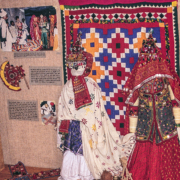
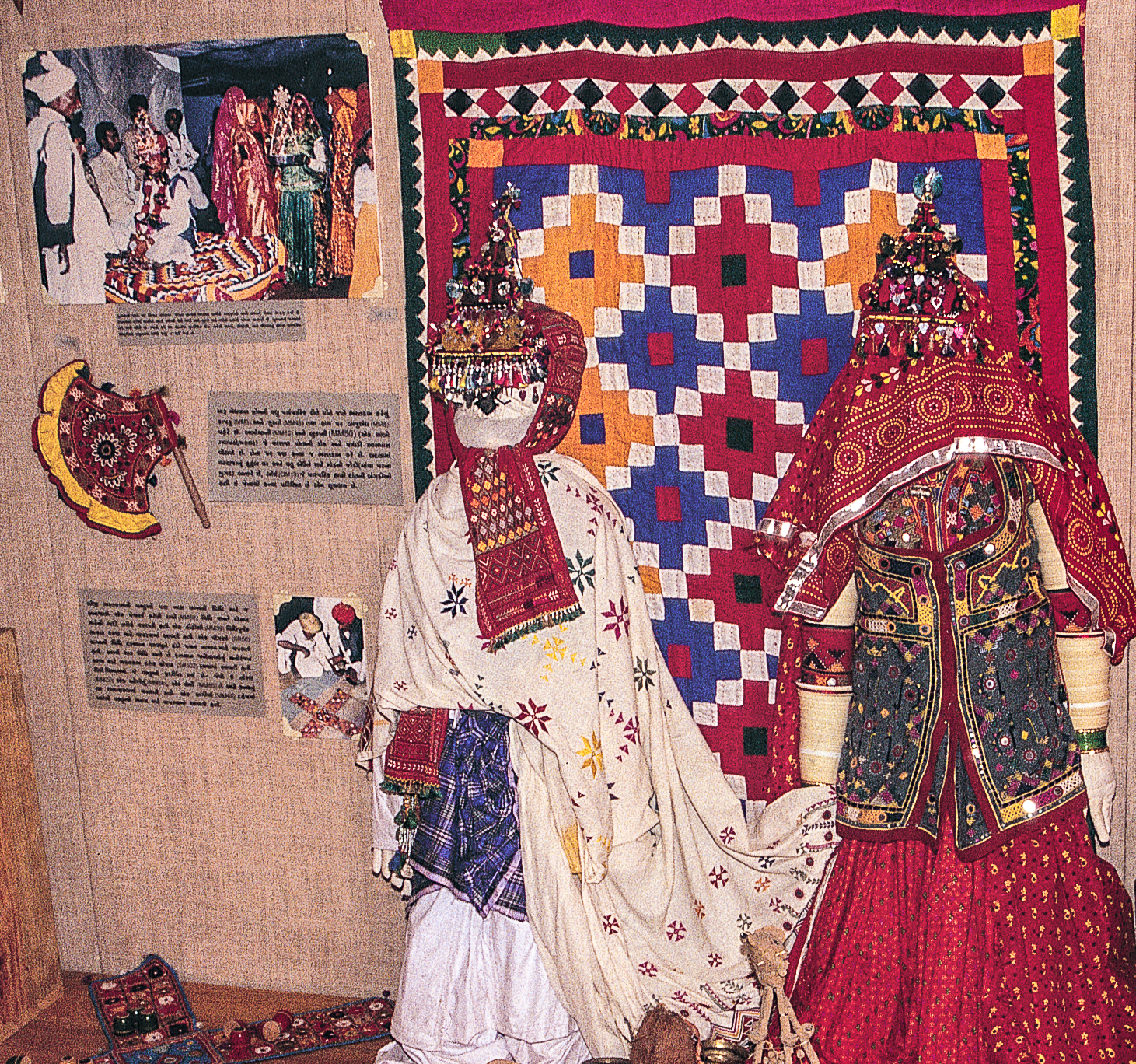 The photo is of the first iteration of the interpretation center of the Kala Raksha Museum. The idea was to portray the traditional context of embroidery for visitors. I engaged artisans to create replicas of pieces in the collection, a prelude to learning to innovate on traditions. I also engaged the late Hariyaben Bhanani, suf embroidery artist, in creating the display to ensure authenticity. A photo of a wedding in her community adds context.
The photo is of the first iteration of the interpretation center of the Kala Raksha Museum. The idea was to portray the traditional context of embroidery for visitors. I engaged artisans to create replicas of pieces in the collection, a prelude to learning to innovate on traditions. I also engaged the late Hariyaben Bhanani, suf embroidery artist, in creating the display to ensure authenticity. A photo of a wedding in her community adds context.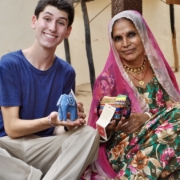
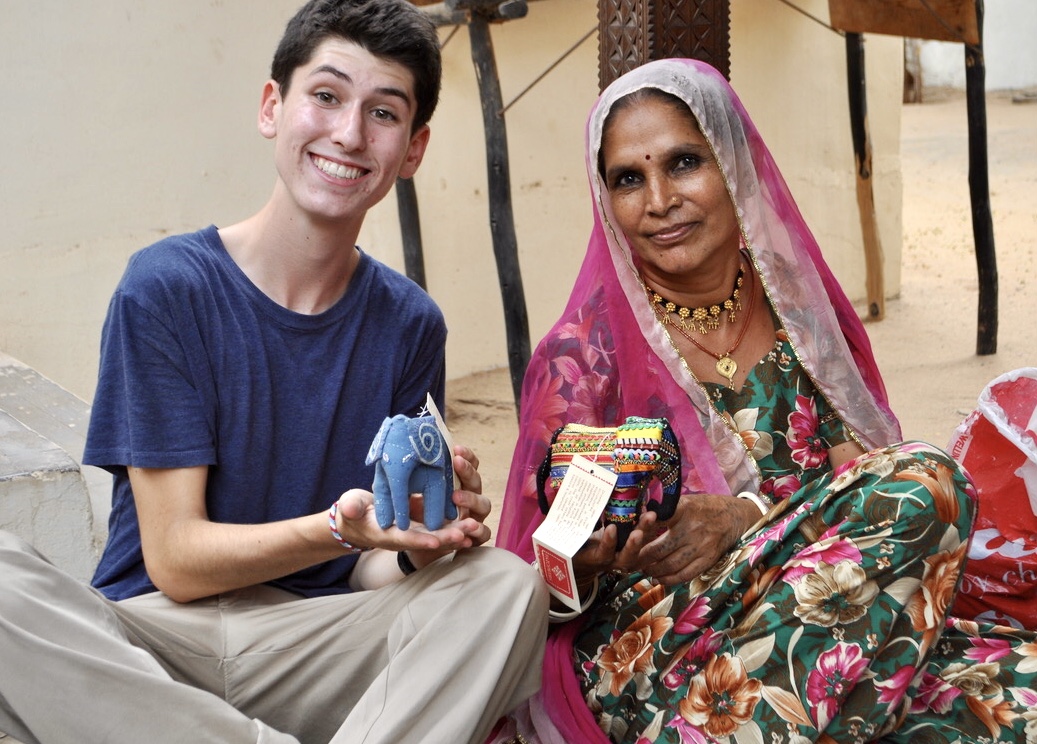 The late Hariyaben Bhanani explains the toys she designed and created to an American student. Hariyaben couldn’t bear to see scraps of painstakingly embroidered fabric thrown away, so she rescued them, took them home, and painstakingly patched them together to form elephants, camels and dolls that she stuffed with other fabric remnants. She lived the spirit of sustainability.
The late Hariyaben Bhanani explains the toys she designed and created to an American student. Hariyaben couldn’t bear to see scraps of painstakingly embroidered fabric thrown away, so she rescued them, took them home, and painstakingly patched them together to form elephants, camels and dolls that she stuffed with other fabric remnants. She lived the spirit of sustainability.